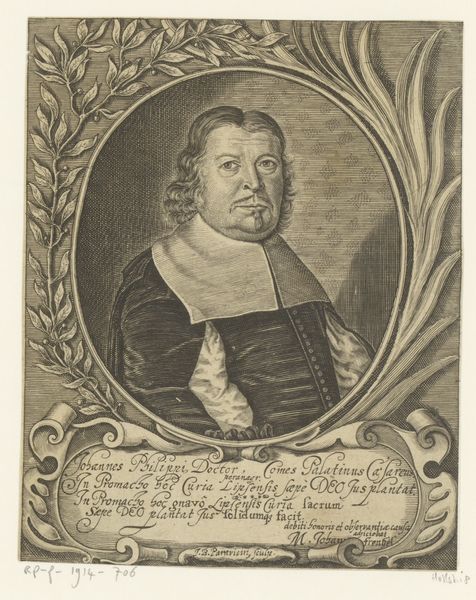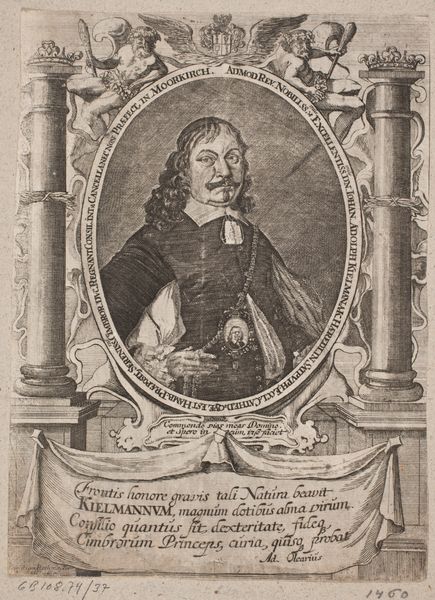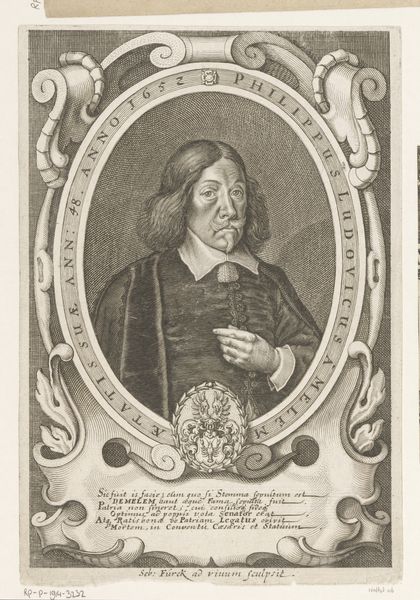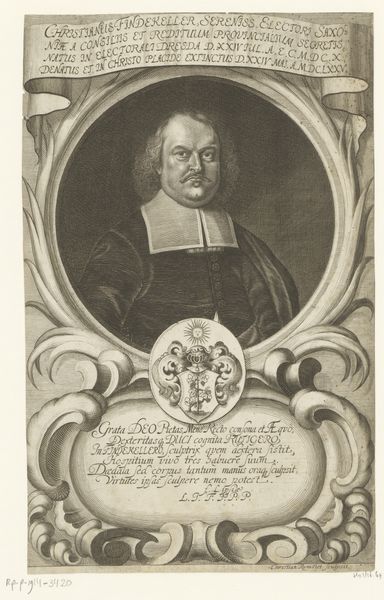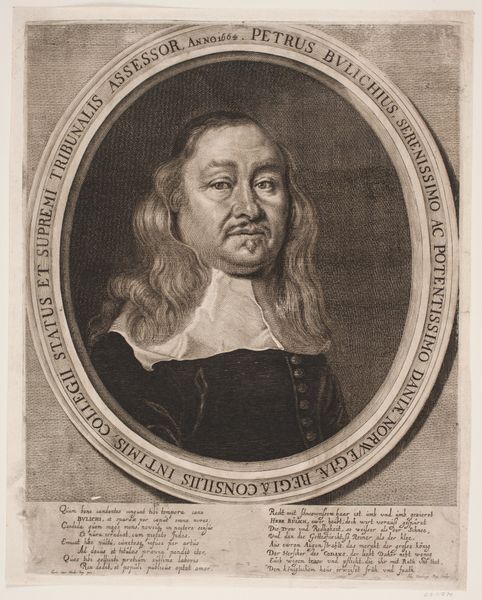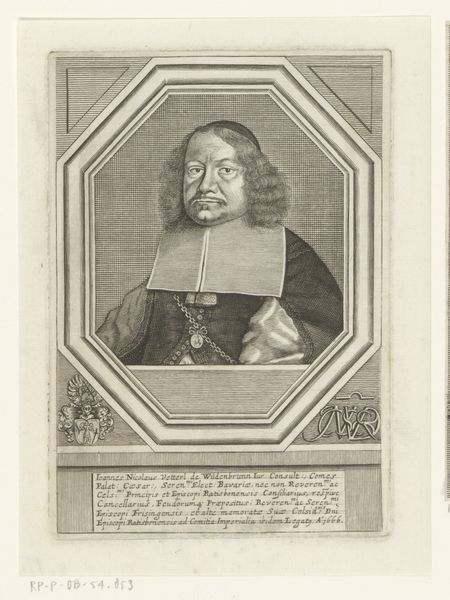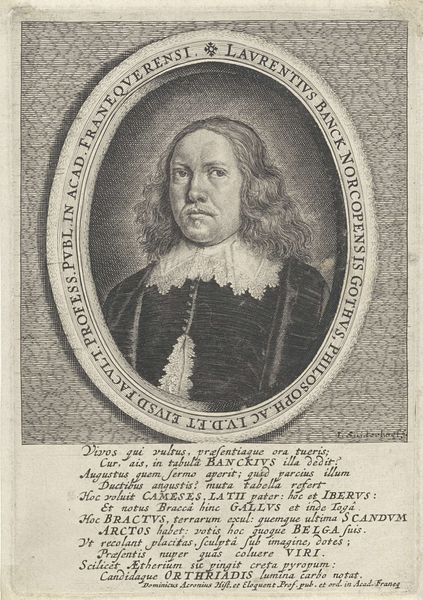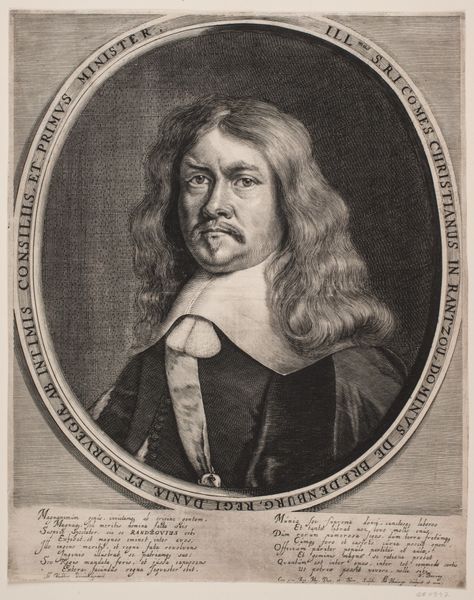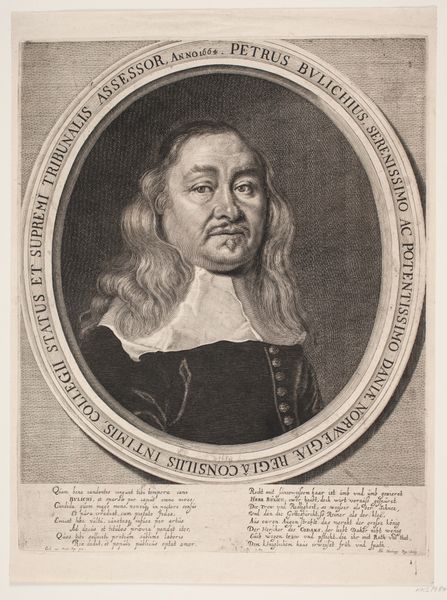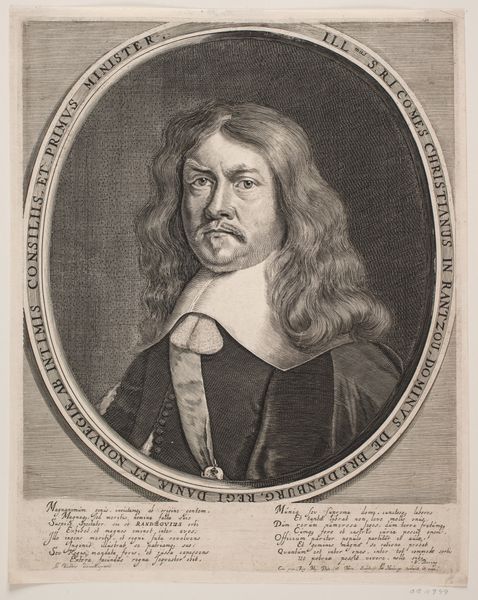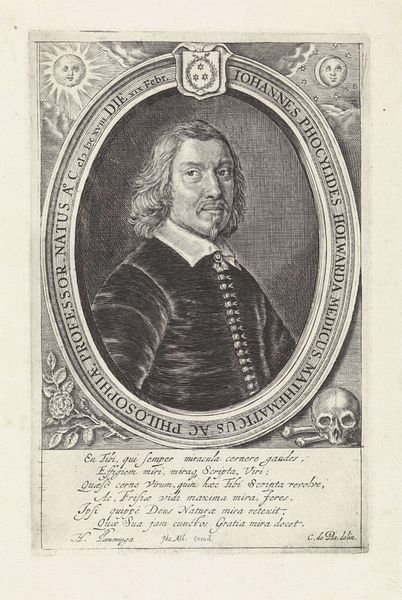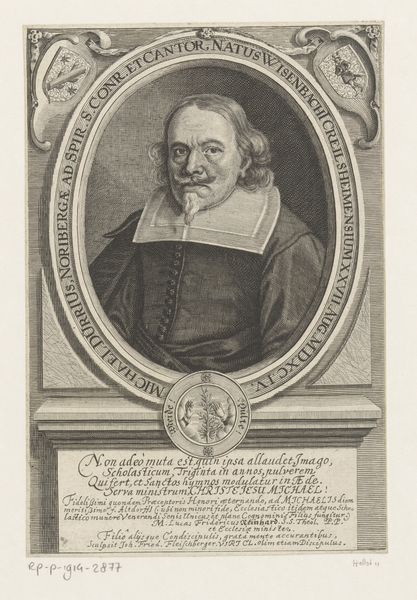
#
pencil drawn
#
pencil sketch
#
old engraving style
#
caricature
#
pencil drawing
#
pen-ink sketch
#
limited contrast and shading
#
pen work
#
pencil work
#
pencil art
Dimensions: height 165 mm, width 127 mm
Copyright: Rijks Museum: Open Domain
This portrait of Immanuel Placotomus was made by Johann Caspar Hoeckner in the 17th century, using engraving. As a print, this work exists within a world of multiples; each impression requiring time and skill but ultimately reproducible. Note the incredible amount of work involved. Engraving is a laborious, subtractive process, where the artist uses a tool called a burin to carve lines directly into a metal plate. These lines hold ink, which is then transferred to paper under great pressure. The clarity of line and tonal variation depend on the engraver's precise control. The fine details like the lace collar, require enormous patience and dexterity. The lettering and ornate frame further demonstrate the engraver's technical mastery. But this wasn't just about skill; it was about conveying status and intellect, with Placotomus presented as a learned man. Prints like this served as a form of social currency, circulating images and ideas within a specific intellectual class. The work involved reflects the values of a society where craftsmanship and learning were intertwined.
Comments
No comments
Be the first to comment and join the conversation on the ultimate creative platform.
